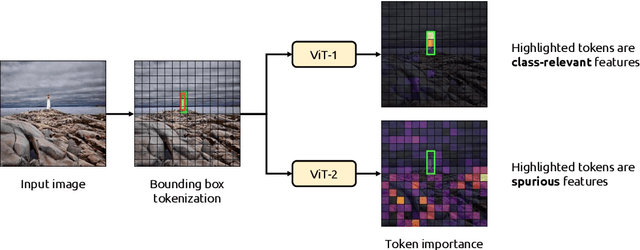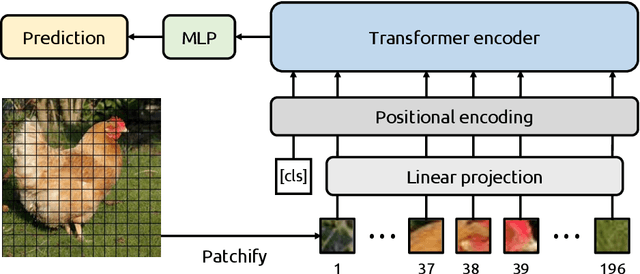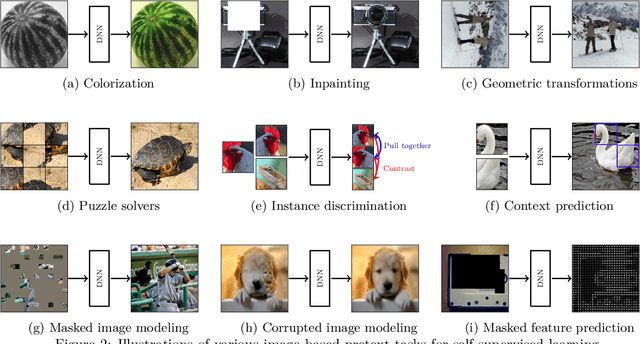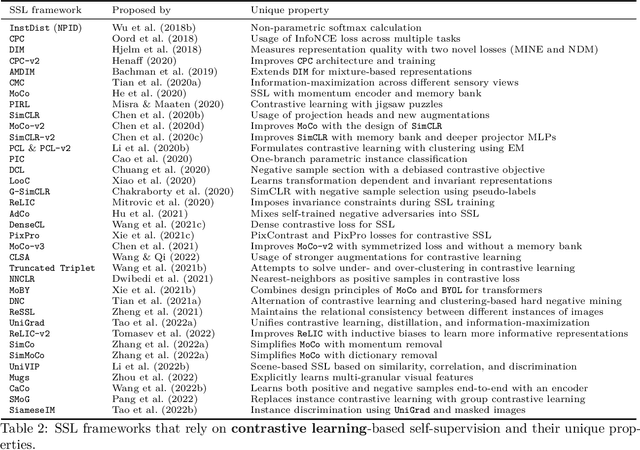Joris Vankerschaver
SpurBreast: A Curated Dataset for Investigating Spurious Correlations in Real-world Breast MRI Classification
Oct 02, 2025Abstract:Deep neural networks (DNNs) have demonstrated remarkable success in medical imaging, yet their real-world deployment remains challenging due to spurious correlations, where models can learn non-clinical features instead of meaningful medical patterns. Existing medical imaging datasets are not designed to systematically study this issue, largely due to restrictive licensing and limited supplementary patient data. To address this gap, we introduce SpurBreast, a curated breast MRI dataset that intentionally incorporates spurious correlations to evaluate their impact on model performance. Analyzing over 100 features involving patient, device, and imaging protocol, we identify two dominant spurious signals: magnetic field strength (a global feature influencing the entire image) and image orientation (a local feature affecting spatial alignment). Through controlled dataset splits, we demonstrate that DNNs can exploit these non-clinical signals, achieving high validation accuracy while failing to generalize to unbiased test data. Alongside these two datasets containing spurious correlations, we also provide benchmark datasets without spurious correlations, allowing researchers to systematically investigate clinically relevant and irrelevant features, uncertainty estimation, adversarial robustness, and generalization strategies. Models and datasets are available at https://github.com/utkuozbulak/spurbreast.
Detecting Regional Spurious Correlations in Vision Transformers via Token Discarding
Sep 04, 2025



Abstract:Due to their powerful feature association capabilities, neural network-based computer vision models have the ability to detect and exploit unintended patterns within the data, potentially leading to correct predictions based on incorrect or unintended but statistically relevant signals. These clues may vary from simple color aberrations to small texts within the image. In situations where these unintended signals align with the predictive task, models can mistakenly link these features with the task and rely on them for making predictions. This phenomenon is referred to as spurious correlations, where patterns appear to be associated with the task but are actually coincidental. As a result, detection and mitigation of spurious correlations have become crucial tasks for building trustworthy, reliable, and generalizable machine learning models. In this work, we present a novel method to detect spurious correlations in vision transformers, a type of neural network architecture that gained significant popularity in recent years. Using both supervised and self-supervised trained models, we present large-scale experiments on the ImageNet dataset demonstrating the ability of the proposed method to identify spurious correlations. We also find that, even if the same architecture is used, the training methodology has a significant impact on the model's reliance on spurious correlations. Furthermore, we show that certain classes in the ImageNet dataset contain spurious signals that are easily detected by the models and discuss the underlying reasons for those spurious signals. In light of our findings, we provide an exhaustive list of the aforementioned images and call for caution in their use in future research efforts. Lastly, we present a case study investigating spurious signals in invasive breast mass classification, grounding our work in real-world scenarios.
Towards Improved Cervical Cancer Screening: Vision Transformer-Based Classification and Interpretability
Apr 30, 2025Abstract:We propose a novel approach to cervical cell image classification for cervical cancer screening using the EVA-02 transformer model. We developed a four-step pipeline: fine-tuning EVA-02, feature extraction, selecting important features through multiple machine learning models, and training a new artificial neural network with optional loss weighting for improved generalization. With this design, our best model achieved an F1-score of 0.85227, outperforming the baseline EVA-02 model (0.84878). We also utilized Kernel SHAP analysis and identified key features correlating with cell morphology and staining characteristics, providing interpretable insights into the decision-making process of the fine-tuned model. Our code is available at https://github.com/Khoa-NT/isbi2025_ps3c.
Boosting 3D Liver Shape Datasets with Diffusion Models and Implicit Neural Representations
Apr 28, 2025Abstract:While the availability of open 3D medical shape datasets is increasing, offering substantial benefits to the research community, we have found that many of these datasets are, unfortunately, disorganized and contain artifacts. These issues limit the development and training of robust models, particularly for accurate 3D reconstruction tasks. In this paper, we examine the current state of available 3D liver shape datasets and propose a solution using diffusion models combined with implicit neural representations (INRs) to augment and expand existing datasets. Our approach utilizes the generative capabilities of diffusion models to create realistic, diverse 3D liver shapes, capturing a wide range of anatomical variations and addressing the problem of data scarcity. Experimental results indicate that our method enhances dataset diversity, providing a scalable solution to improve the accuracy and reliability of 3D liver reconstruction and generation in medical applications. Finally, we suggest that diffusion models can also be applied to other downstream tasks in 3D medical imaging.
One Patient's Annotation is Another One's Initialization: Towards Zero-Shot Surgical Video Segmentation with Cross-Patient Initialization
Mar 04, 2025Abstract:Video object segmentation is an emerging technology that is well-suited for real-time surgical video segmentation, offering valuable clinical assistance in the operating room by ensuring consistent frame tracking. However, its adoption is limited by the need for manual intervention to select the tracked object, making it impractical in surgical settings. In this work, we tackle this challenge with an innovative solution: using previously annotated frames from other patients as the tracking frames. We find that this unconventional approach can match or even surpass the performance of using patients' own tracking frames, enabling more autonomous and efficient AI-assisted surgical workflows. Furthermore, we analyze the benefits and limitations of this approach, highlighting its potential to enhance segmentation accuracy while reducing the need for manual input. Our findings provide insights into key factors influencing performance, offering a foundation for future research on optimizing cross-patient frame selection for real-time surgical video analysis.
Less is More? Revisiting the Importance of Frame Rate in Real-Time Zero-Shot Surgical Video Segmentation
Feb 28, 2025Abstract:Real-time video segmentation is a promising feature for AI-assisted surgery, providing intraoperative guidance by identifying surgical tools and anatomical structures. However, deploying state-of-the-art segmentation models, such as SAM2, in real-time settings is computationally demanding, which makes it essential to balance frame rate and segmentation performance. In this study, we investigate the impact of frame rate on zero-shot surgical video segmentation, evaluating SAM2's effectiveness across multiple frame sampling rates for cholecystectomy procedures. Surprisingly, our findings indicate that in conventional evaluation settings, frame rates as low as a single frame per second can outperform 25 FPS, as fewer frames smooth out segmentation inconsistencies. However, when assessed in a real-time streaming scenario, higher frame rates yield superior temporal coherence and stability, particularly for dynamic objects such as surgical graspers. Finally, we investigate human perception of real-time surgical video segmentation among professionals who work closely with such data and find that respondents consistently prefer high FPS segmentation mask overlays, reinforcing the importance of real-time evaluation in AI-assisted surgery.
Self-supervised Benchmark Lottery on ImageNet: Do Marginal Improvements Translate to Improvements on Similar Datasets?
Jan 26, 2025Abstract:Machine learning (ML) research strongly relies on benchmarks in order to determine the relative effectiveness of newly proposed models. Recently, a number of prominent research effort argued that a number of models that improve the state-of-the-art by a small margin tend to do so by winning what they call a "benchmark lottery". An important benchmark in the field of machine learning and computer vision is the ImageNet where newly proposed models are often showcased based on their performance on this dataset. Given the large number of self-supervised learning (SSL) frameworks that has been proposed in the past couple of years each coming with marginal improvements on the ImageNet dataset, in this work, we evaluate whether those marginal improvements on ImageNet translate to improvements on similar datasets or not. To do so, we investigate twelve popular SSL frameworks on five ImageNet variants and discover that models that seem to perform well on ImageNet may experience significant performance declines on similar datasets. Specifically, state-of-the-art frameworks such as DINO and Swav, which are praised for their performance, exhibit substantial drops in performance while MoCo and Barlow Twins displays comparatively good results. As a result, we argue that otherwise good and desirable properties of models remain hidden when benchmarking is only performed on the ImageNet validation set, making us call for more adequate benchmarking. To avoid the "benchmark lottery" on ImageNet and to ensure a fair benchmarking process, we investigate the usage of a unified metric that takes into account the performance of models on other ImageNet variant datasets.
Identifying Critical Tokens for Accurate Predictions in Transformer-based Medical Imaging Models
Jan 26, 2025Abstract:With the advancements in self-supervised learning (SSL), transformer-based computer vision models have recently demonstrated superior results compared to convolutional neural networks (CNNs) and are poised to dominate the field of artificial intelligence (AI)-based medical imaging in the upcoming years. Nevertheless, similar to CNNs, unveiling the decision-making process of transformer-based models remains a challenge. In this work, we take a step towards demystifying the decision-making process of transformer-based medical imaging models and propose Token Insight, a novel method that identifies the critical tokens that contribute to the prediction made by the model. Our method relies on the principled approach of token discarding native to transformer-based models, requires no additional module, and can be applied to any transformer model. Using the proposed approach, we quantify the importance of each token based on its contribution to the prediction and enable a more nuanced understanding of the model's decisions. Our experimental results which are showcased on the problem of colonic polyp identification using both supervised and self-supervised pretrained vision transformers indicate that Token Insight contributes to a more transparent and interpretable transformer-based medical imaging model, fostering trust and facilitating broader adoption in clinical settings.
Towards Abdominal 3-D Scene Rendering from Laparoscopy Surgical Videos using NeRFs
Oct 18, 2023Abstract:Given that a conventional laparoscope only provides a two-dimensional (2-D) view, the detection and diagnosis of medical ailments can be challenging. To overcome the visual constraints associated with laparoscopy, the use of laparoscopic images and videos to reconstruct the three-dimensional (3-D) anatomical structure of the abdomen has proven to be a promising approach. Neural Radiance Fields (NeRFs) have recently gained attention thanks to their ability to generate photorealistic images from a 3-D static scene, thus facilitating a more comprehensive exploration of the abdomen through the synthesis of new views. This distinguishes NeRFs from alternative methods such as Simultaneous Localization and Mapping (SLAM) and depth estimation. In this paper, we present a comprehensive examination of NeRFs in the context of laparoscopy surgical videos, with the goal of rendering abdominal scenes in 3-D. Although our experimental results are promising, the proposed approach encounters substantial challenges, which require further exploration in future research.
Know Your Self-supervised Learning: A Survey on Image-based Generative and Discriminative Training
May 23, 2023



Abstract:Although supervised learning has been highly successful in improving the state-of-the-art in the domain of image-based computer vision in the past, the margin of improvement has diminished significantly in recent years, indicating that a plateau is in sight. Meanwhile, the use of self-supervised learning (SSL) for the purpose of natural language processing (NLP) has seen tremendous successes during the past couple of years, with this new learning paradigm yielding powerful language models. Inspired by the excellent results obtained in the field of NLP, self-supervised methods that rely on clustering, contrastive learning, distillation, and information-maximization, which all fall under the banner of discriminative SSL, have experienced a swift uptake in the area of computer vision. Shortly afterwards, generative SSL frameworks that are mostly based on masked image modeling, complemented and surpassed the results obtained with discriminative SSL. Consequently, within a span of three years, over $100$ unique general-purpose frameworks for generative and discriminative SSL, with a focus on imaging, were proposed. In this survey, we review a plethora of research efforts conducted on image-oriented SSL, providing a historic view and paying attention to best practices as well as useful software packages. While doing so, we discuss pretext tasks for image-based SSL, as well as techniques that are commonly used in image-based SSL. Lastly, to aid researchers who aim at contributing to image-focused SSL, we outline a number of promising research directions.
* Published in Transactions on Machine Learning Research
 Add to Chrome
Add to Chrome Add to Firefox
Add to Firefox Add to Edge
Add to Edge